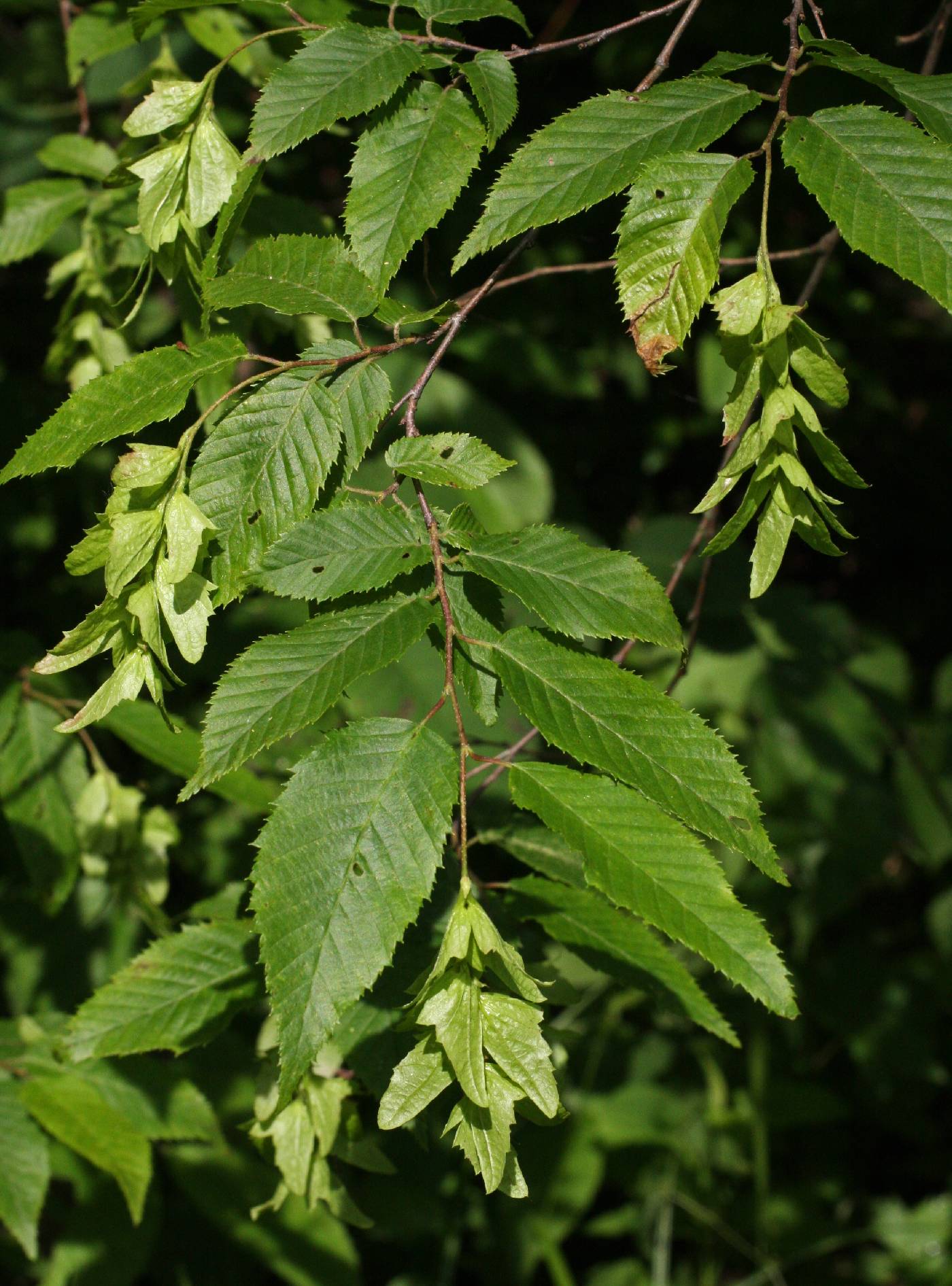Carpinus
|
Family: Betulaceae |
Trees , 8--25 m; trunks usually 1, branching mostly deliquescent, trunk and branches irregularly longitudinally ridged, fluted. Bark of trunk and branches bluish to brownish gray, thin, smooth, close [thicker, broken or shredded]; lenticels generally inconspicuous. Wood nearly white to light brown, very hard and heavy, texture fine. Branches, branchlets, and twigs conspicuously 2-ranked; young twigs differentiated into long and short shoots. Winter buds sessile, ovoid, 4-angled in cross section, apex acute; scales many, imbricate, smooth. Leaves on long and short shoots, 2-ranked. Leaf blade narrowly ovate to ovate, elliptic, or obovate with 10 or more pairs of lateral veins, 3--12 × 3--6 cm, thin, margins doubly serrate to serrulate; surfaces abaxially glabrous to tomentose, sometimes covered with small glands. Inflorescences: staminate catkins solitary or in small racemose clusters, lateral, formed previous growing season and enclosed [exposed] in buds during winter, expanding with leaves; pistillate catkins distal to staminate on short, leafy new growth, solitary, ± erect, elongate; bracts and flowers uncrowded. Staminate flowers in catkins 3 per scale, crowded together on pilose receptacle; stamens 3(--6), short; filaments often distinct part way to base; anthers divided into 2 parts, each 1-locular, apex pilose, Pistillate flowers 2 per bract. Infructescences loose racemose clusters of paired bracts, clusters pendulous, elongate; paired bracts deciduous with fruit, expanded, (1--)3-lobed, variously toothed, foliaceous, each bract subtending 1 fruit. Fruits small nutlets, deltoid, longitudinally ribbed, often crowned with persistent sepals and styles. x = 8. In the flora, Carpinus consists of a single native species, C . caroliniana , which is composed of two fairly distinctive geographic races (J. J. Furlow 1987, 1987b), treated here as subspecies. Worldwide it includes about 25 species, some of which become large trees. The European C . betulus is frequently planted in North America and persists long after other signs of human development have vanished. It seldom escapes, however, and it has not become naturalized. In the mountains of Mexico and Central America, the larger C . tropicalis (Donnell Smith) Lundell is widespread in the temperate forest zone. Closely related to Ostrya , Carpinus is easily recognized by its smooth, gray, often fluted stems and racemose infructescences consisting of pairs of uncrowded, foliaceous, 3-lobed bracts, each subtending a small triangular nutlet. The staminate (but not the pistillate) catkins develop in the autumn and are enclosed within buds throughout the winter prior to anthesis (in Ostrya , these are exposed during the winter). The pistillate catkins are produced on the first new growth in the spring. Of relatively minor economic importance, Carpinus has limited use for its very hard wood, especially in Europe, where it is used for making mallet heads, tool handles, levers, and other small, hard, wooden objects.
Staminate catkins pendulous, the scales ovate, each bearing a single naked fl composed of several stamens; filaments short, each divided at the summit and bearing
2 apically pilose half-anthers; pistillate catkins slender, somewhat shorter, with ovate, deciduous scales; pistillate fls in pairs, each subtended by a minute bract adnate at base to 2 minute bractlets, the cal also minute; bracts and bractlets accrescent in fr; fr a small, ribbed nutlet; trees or shrubs, fl in early spring. 30, N. Temp. Gleason, Henry A. & Cronquist, Arthur J. 1991. Manual of vascular plants of northeastern United States and adjacent Canada. lxxv + 910 pp. ©The New York Botanical Garden. All rights reserved. Used by permission. |

